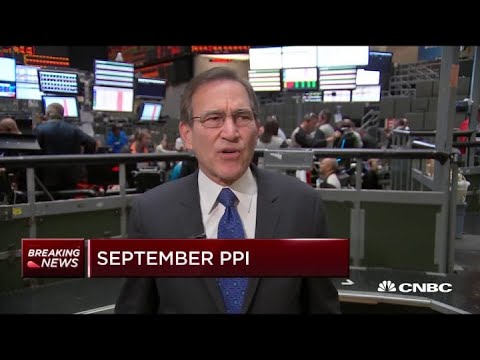Us Producer Price Index
Table of Contents Heading
- Construction Prices And Real Property Prices
- Producer Price Index Ppi Forecast
- What Is The Us Producer Price Index (ppi) ?
- Related Measures
- Other Price Index And Industry Resources:
- Producer Price Index For Industrial Products
- Consumer Price Index Vs Producer Price Index: What’s The Difference?
In order to show the true development of price movements, actual transaction prices – instead of list prices – are collected. The producer price index for final demand dropped 0.3% last month, the largest decline since January, after edging up 0.1% in August, the Labor Department said. The nature of the data gives the indices a dimension as a PPI inflation measure; these percentage changes measure the growth and decline of prices for goods and services by the manufacturers themselves. The industry classification has around 535 indices; the commodity classification covers approximately 3,700 different single commodity indices. And the FD – ID classification publishes over 600 different indices, measuring price changes on monthly, yearly and seasonally adjusted basis. Below is a forecast of the U.S. producer price index, or PPI, broken down by month. This forecast is produced based on prior values of the PPI along with other factors such as commodity prices, currency exchange rates and economic indicators.

Revisions are also contemplated in these reports, but they are made 4 months after the month of publication. Fusion Mediawould like to remind you that the data contained in this website is not necessarily real-time nor accurate.
Construction Prices And Real Property Prices
U.S. financial markets were little moved by the producer inflation data. The Fed, which has a 2% annual inflation target, tracks the core personal consumption expenditures price index for monetary policy. The core PCE price index rose 1.8% on a year-on-year basis in August and has undershot its target this year.
The Fed tracks the core personal consumption expenditures price index for its inflation target. The U.S. central bank has signaled it would tolerate higher prices after inflation persistently undershot its target. A 6.0% jump in the cost of energy goods accounted for more than two-thirds of the broad-based rise in the PPI last month. Manufacturing and services industries have been flagging higher production costs as the year-long pandemic gums up the supply chain. Surveys this month showed measures of prices paid by manufacturers and services industries in February racing to levels last seen in 2008. The above chart shows the progression of monthly annualized percentage change for US versus EU PPI over the past 10 years.
Producer Price Index Ppi Forecast
Earlier this week, the U.S. reported that consumer prices rose 0.4% in February, the biggest gain in six months, also because of rising energy prices. However, core inflation at the consumer level posted a much smaller 0.1% gain. The Labor Department’s producer price index, which measures inflation before it reaches consumers. increased by 0.5% last month following a record jump of 1.3% the month before. Most of the February advance in prices for final demand can be traced to a 1.4-percent rise in the index for final demand goods.
PPIs provide measures of average movements of prices received by the producers of various commodities. They are often seen as advanced indicators of price changes throughout the economy, including changes in the prices of consumer goods and services. Manufacturing covers the production of semi-processed goods and other intermediate goods as well as final products such as consumer goods and capital equipment. A variety of price indices may be used to measure inflation in an economy.
What Is The Us Producer Price Index (ppi) ?
Year-on-year, producer prices went up 0.8 percent and the core index increased 1.4 percent. Before we look at the PPI, it is often theConsumer Price Index that is the most frequently cited measure of inflation.
WASHINGTON — Energy prices continued to rocket higher in February, though overall wholesale prices moderated after a record jump in January. When not analyzing financial and economic data, Jill enjoys running, traveling, and cooking for family and friends. After years in science, Jill shifted her focus to finance and economics. She is interested in economic trends and market reactions, and how domestic and international economies integrate, interact, and influence the world’s markets. The cost of services fell 0.2%, the most since February 2017, after increasing 0.3% in August. Services were dragged down by a 1.0% drop in trade services, which measure changes in margins received by wholesalers and retailers. In addition, private services industry growth slowed to a three-year low in September.
Related Measures
Inflation is less dramatic than a crash, but it can be more devastating to your portfolio. In February 2011, the BLS began experimenting with improvements to the stage-of-processing index. After initially focusing only on the price changes of intermediate processed and unprocessed goods, the analysis began to track the escalating costs of services and construction activities as well. With the PPI and CPI data in hand, economists are estimating that the core PCE price index rose by as much as 0.18% in February. That would lift the annual increase in the core PCE price index to as high as 1.6%. In February, wholesale core goods prices gained 0.3% after rising 0.8% in January, driven by the dollar’s weakness against the currencies of the United States’ main trade partners. Consumers’ one-year inflation expectations moderated to 3.1% in mid-March from 3.3% in February, the University of Michigan said in a separate report on Friday.
Economists and policy makers work closely with central banks to coordinate optimal open market operations and monetary policy adjustments that promote a stable long-term rate of inflation. Excluding the volatile food, energy and trade services components, producer prices climbed 0.2%. In the 12 months through February, the core PPI increased 2.2% after gaining 2.0% in January. The PPI that excludes food and energy and the one excluding food, energy and services, are necessary as food and energy tend to be much more volatile components of the index. This is due to the correlation of those components to commodity prices, which can have monthly swings of several percentage points.
Other Price Index And Industry Resources:
The core index which excludes foods and energy was 0.2 percent higher in February, also matching expectations of 0.2 percent. Year-on-year, producer prices went up 2.8 percent, the biggest increase since October 2018, and the core index increased 2.5 percent.
These include white papers, government data, original reporting, and interviews with industry experts. We also reference original research from other reputable publishers where appropriate. You can learn more about the standards we follow in producing accurate, unbiased content in oureditorial policy. So, three months after the contract is signed, the cost of the component could be $1.02 each or $0.99 each, depending on whether or not the PPI went up or down and how much it changed. In 1982, the BLS reset all producer price index bases to 100, and this event became the base year. The index for the non-domestic market is further divided into an index for the euro area and one for the non-euro area . Price increases slowed despite a 6% surge in energy last month, which followed a 5.1% jump in January, the Labor Department said Friday.
Producer Price Index For Industrial Products
This metric measures the price change of a basket of goods and services from the perspective of the consumer. Often overlooked, theProducer Price Index can also be utilized to assess the rate of change in prices. Producer prices for final demand in the US jumped 1.3 percent from a month earlier in January 2021, following a 0.3 percent increase in December and easily beating market consensus of a 0.4 percent gain. It was the largest advance since the series began in December 2009, mainly due to a record 1.3 percent rise in cost of services. Meanwhile, goods prices moved up 1.4 percent, the largest increase since May 2020, due to a 5.1 percent jump in energy cost. On a yearly basis, producer prices advanced 1.7 percent in January, also beating forecasts of 0.9 percent.

For these uses they need to be maintained by the national statistical institutes at a detailed level. Many medium-sized and small countries calculate detailed PPIs beyond the requirements of the EU Regulation in order to satisfy a national demand. As the basis for contract price adjustments – PPI data are used in escalating purchase and sales contracts. These contracts typically specify amounts of money to be paid at some point in the future. It is often desirable to include an escalation clause that takes account of increases in input prices.
Investor Services
Investors are going to show a stronger preference for holding securities in a currency with higher returns, all things being equal. Amongst the majors, increasing prospects for higher rates will lead to a stronger currency, at least initially.
- All intellectual property rights are reserved by the providers and/or the exchange providing the data contained in this website.
- The Labor Department’s producer price index, which measures inflation before it reaches consumers.
- The producer price index for final demand dropped 0.3% last month, weighed down by decreases in the costs of goods and services, the government said.
- Then you will be able to mark statistics as favourites and use personal statistics alerts.
Producer prices for final demand in the US rose 0.5 percent from a month earlier in February 2021, slowing from a 1.3 percent increase in January, which was the largest advance since the series began in December 2009. Goods prices climbed 1.4 percent, boosted by a 6.0 percent jump in energy prices and a 1.3 percent gain in food cost.
Consumer Price Index Vs Producer Price Index: What’s The Difference?
The PPI collects data for nearly every industry in the goods-producing sector of the economy. Changes in farm-level and wholesale-level PPIs are of particular interest in forecasting food CPIs. Excluding the volatile food, energy and trade services components, producer prices were unchanged last month after jumping 0.4% in August. The so-called core PPI increased 1.7% in the 12 months through September after climbing 1.9% in August.
When core PPI is calculated, volatile items such as energy and food prices are excluded from the core calculation. Although these omissions reduce the overall accuracy of the index, their prices are heavily influenced by temporary supply and demand imbalances that would make the index difficult to compare on a long-term basis. Luckily, the BLS tracks the price changes for many of these missing components, so interested analysts can recalculate the index values to include food and energy inputs. PPI can also be broken down into general categories of input and output measures that reflect the rate of change in prices for which consumers buy and sell their products, respectively. There are three basic measures of PPI that are based on the various stages of processing; the index can be measured on crude, intermediate and finished goods.

